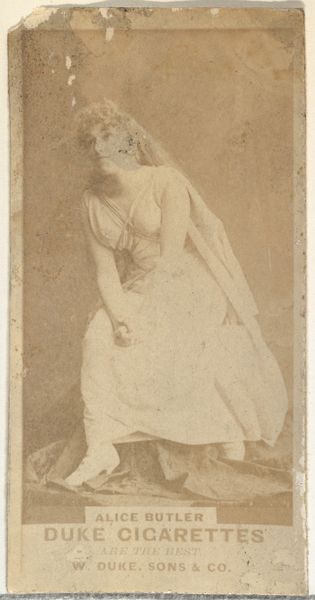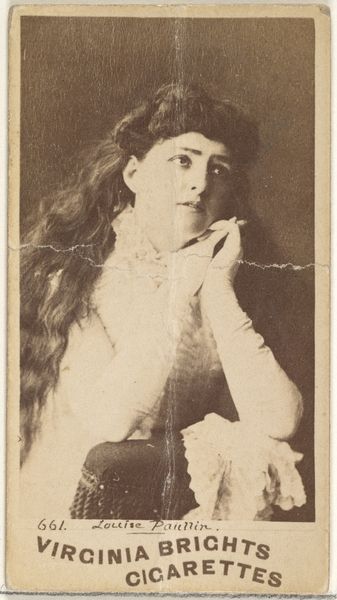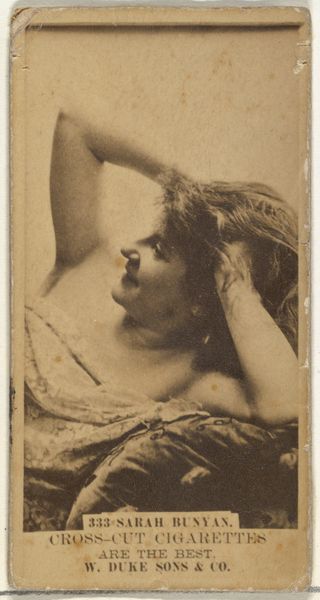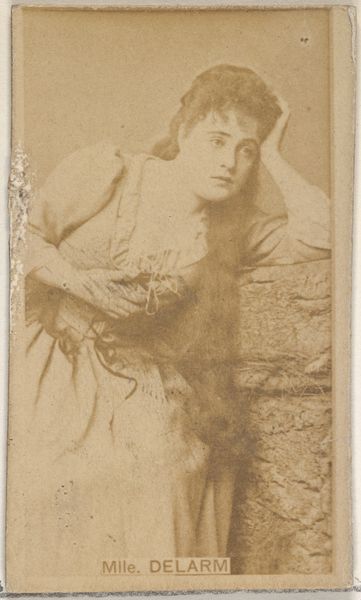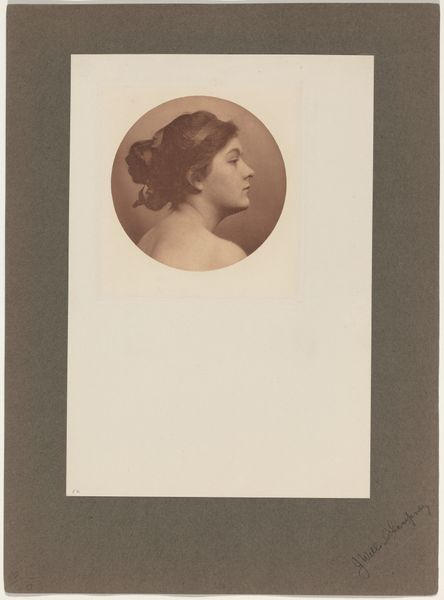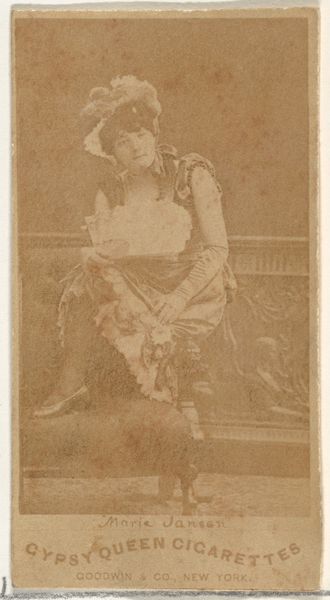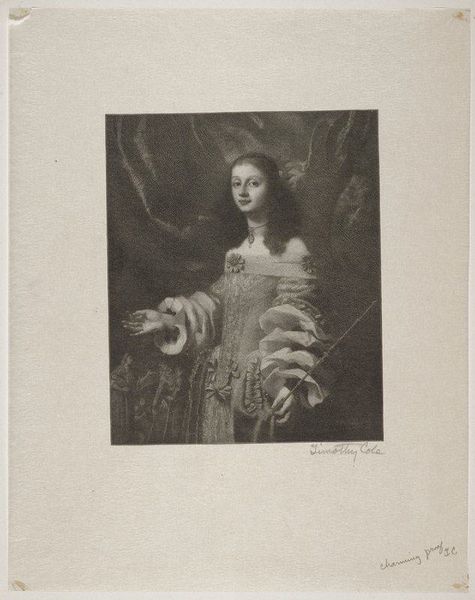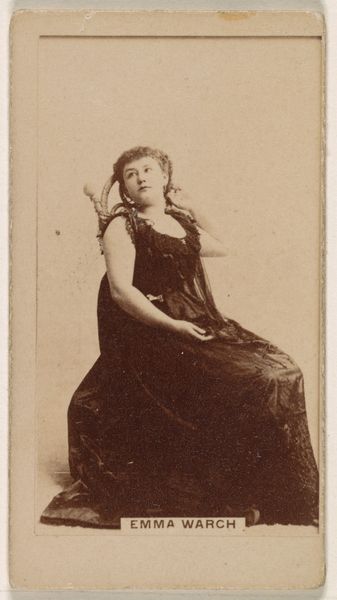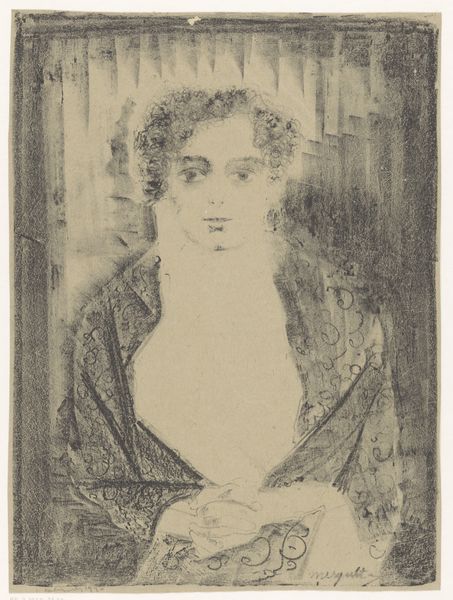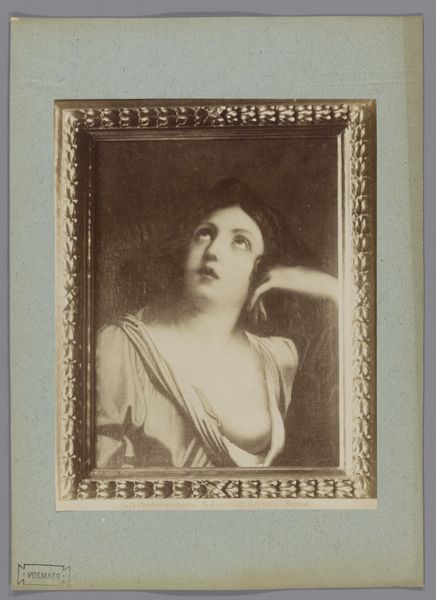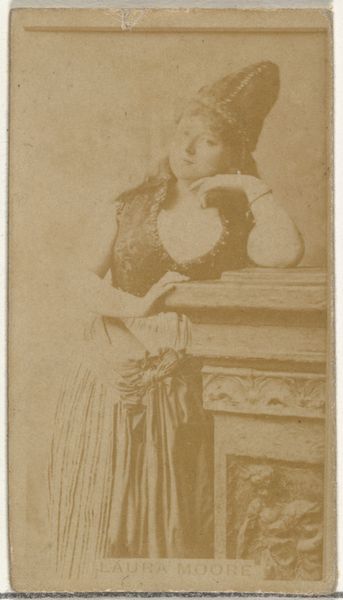
Fotoreproductie van het schilderij van de berouwvolle Magdalena naar Titiaan in de Galleria Pitti te Florence, Italië 1857 - 1900
0:00
0:00
photography, gelatin-silver-print
#
portrait
#
photo of handprinted image
#
11_renaissance
#
photography
#
gelatin-silver-print
#
portrait drawing
#
history-painting
#
academic-art
#
italian-renaissance
#
realism
Dimensions: height 246 mm, width 185 mm
Copyright: Rijks Museum: Open Domain
Editor: Here we have a photograph taken by Fratelli Alinari between 1857 and 1900. It's a gelatin-silver print of Titian's painting of the repentant Magdalene, housed here at the Rijksmuseum. The dramatic lighting and pose convey a sense of profound sorrow. What formal qualities stand out to you? Curator: The photographer, Alinari, appears most concerned with re-presenting Titian's pictorial space. Note how the contrasts are manipulated to simulate the chiaroscuro of the original painting. Observe, too, the cropping—the choices that Alinari made frame the composition. The artist, it seems, uses photography almost as an act of preservation. Does the image offer any novel aesthetic commentary, though? Editor: It's interesting you say that. Perhaps Alinari wasn't interested in novel commentary. The composition focuses primarily on the figure, not really interacting with the ground. The contrasts do draw the eye. Do you think Alinari made particular choices when highlighting aspects of Titian’s brushstrokes or textures through photography? Curator: It's a valid point that Alinari makes interesting choices about representing Titian. The image, by privileging line and tone over colour, alters our appreciation of Titian's technical virtuosity. Consider the texture of the hair—Alinari renders this almost palpable through his photographic manipulation. In a way, Alinari translates painting into the photographic language, while trying to remain faithful to its origin. How does this photographic interpretation invite a distinct mode of observation, one that perhaps differs from encountering Titian's original painting? Editor: That's a perspective I hadn't considered! By removing the color, it does allow you to really concentrate on the lighting and texture. I'll definitely think more about how the choice of medium shapes our interpretation. Curator: Precisely. And in examining Alinari's formal choices, we gain insight not only into Titian's work, but into the evolution of photographic interpretation itself.
Comments
No comments
Be the first to comment and join the conversation on the ultimate creative platform.

